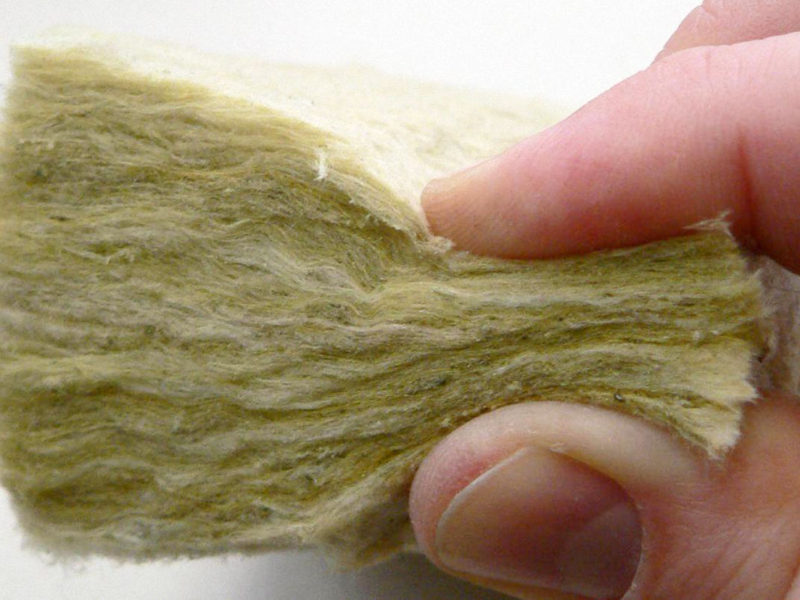
Everything You Should Know About Thermal Insulation
Having good thermal insulation is one of the biggest secrets to achieving an efficient and comfortable home and, as such, its choice and installation must be given the importance it deserves. In addition, its usefulness is not only limited to the winter months. Good insulation reduces heat losses and leaks in cold seasons but also overheating and hot air intake in summer. No matter how you look at it, a good decision for your home.
Let’s take a look at the two most common insulation materials:
Table of Contents
What is Mineral Wool?
Mineral wool is an insulating material made up of interlaced fibers of materials of mineral origin. The air that is confined between the fibers is what gives the material excellent thermal and acoustic properties.
Basalt rocks or silica sand are mainly used as raw material.
In the first case, in which the raw material is basalt rocks, the resulting product is called rock wool.
In the second case, in which the raw material is silica sand, it has traditionally been called glass wool or mineral wool.
From now on, for reasons of the comfort of use, we will call mineral wool the wool that comes from silica sand.
How is Mineral Wool made?
Mineral wool is made from silica sand and recycled glass by melting and fibbing. The initial mixture melts at 1450ºC and then, by means of a mechanical rotation, very fine fibers are produced which in the cooling process intermingle. Binders are then added to produce panels or silicones to produce bulk insulation. In the case of producing panels, the binders are polymerized and then coatings of paper, aluminum, or other materials are applied to give mechanical, acoustic, vapor-free properties, etc. to the whole. In the case of bulk mineral wool for blowing, silicones and other additives reduce dust and give it a smooth appearance, making it more pleasant to apply.
What are the characteristics of Mineral Wool?
Excellent thermal insulation
The thermal conductivity of mineral wool is very low, between 0.030 and 0.040 W / mK, with which they have excellent properties as a thermal insulator.
In addition, it is a material that has low density, from 10kg / m3 to 40kg / m3 depending on the presentation format, which can be suitable for applications that require little weight, such as false ceilings, etc. The fibers are not compacted, which means that they hardly show any settlement over time. In addition, this material prevents the attacks of rodents.
Acoustic isolation
Mineral wool also has very good performance as an acoustic insulator where the final result depends on the set where it is installed since it is the complete system that presents dynamic rigidity, resistance to the passage of air, and acoustic absorption.
Good classification in its behavior against fire
Mineral wool is a non-combustible product, so it has excellent behavior against fire. Its A1 classification, which is the maximum, allows it to easily comply with the requirements of the safety regulations in case of fire.
Permeable to water vapor
Mineral wool is permeable to water vapor, that is, it allows water vapor from inside buildings to flow to the outside through walls.
Recycled content of mineral wool
This material requires a high percentage of recycled glass for its manufacture, which can range between 10% and 30%, which contributes significantly to the circular economy.
In addition, the final product is long-lasting, with an expected half-life of more than 50 years.
What are the presentation formats?
The most common presentation formats are the following:
- Panels
- Rolls
- Bulk insulation
Both the panels and the mineral wool rolls can be presented with different coatings depending on the applications:
- Kraft paper acts as a good vapor barrier
- Aluminum foil
- High-density acoustic linings
What are the most common applications of Mineral Wool?
The insulation Mineral Wool in Construction
In Building we have two requirements: thermal insulation and acoustic insulation. We can therefore say that Mineral Wool meets both requirements simultaneously.
This makes it a very suitable insulating material both in New Construction and in Building Rehabilitation.
It can be applied in different situations:
- Insulation of facades, roofs, floors, or party walls, that is, of enclosures with the outside.
- Isolation of habitable premises with non-habitable premises, such as garages or stairs.
- Isolation of special premises, such as acoustic insulation of facilities rooms such as elevators.
- Isolation of premises considered noisy rooms in the Technical Building Code.
- Insulation of ventilation ducts.
Mineral Wool in the Industry
In industry, it also has numerous applications.
- Insulation of roofs and facades of industrial buildings.
- Insulation of air conditioning ducts or any other industrial application.
- Insulation of ovens and other very hot machinery.
- Industrial freezers.
Rock Wool, What Is It? What Are Its Properties And Applications?
The Rockwool is a material used as thermal insulation in building and industry. It is a type of mineral wool that is produced from natural rock such as basalt, a very common type of volcanic rock because its presence in the earth’s crust is very abundant. The isolation by Rockwool is one of the most common applications.
Being a natural rock is considered to be a sustainable material. It can also be recycled and therefore reintegrated into the production cycle (circular economy).
How is Rock Wool made?
The manufacturing process involves heating the rock in a furnace to a temperature of up to 1650˚C. Being an igneous rock, it liquefies and something similar to magma is obtained, which is later transformed. For this, it is exposed to a jet of air or steam at high pressure. It is then centrifuged at such a speed that long fiber-like strands are obtained. Said fibers are captured and compressed into “blankets”. Finally, they are cut into panels in the desired format. If they are not compressed, you get rock wool flakes or flocs for blowing or blowing.
What are the characteristics of Rock Wool?
1. Excellent thermal insulation
Its thermal conductivity is low, of the order of 0.037 W / MK. Hence, it is good thermal insulation. During the production process for the formation of the panels, the fibers are compressed and trap air between them. This resting air reduces the material’s ability to transmit heat by conduction.
Rock wool is a non-hydrophilic insulator as it does not retain moisture. It is also permeable to water vapor. Therefore, it helps prevent problems derived from interstitial condensation on facades and roofs where it is installed. Let’s not forget that wet insulation loses all its thermal properties. As it is also an inorganic material, the likelihood of mold formation is reduced.
2. Good classification in their behavior against fire
Another advantage of stone wool is its excellent behavior to fire. Its A1 classification allows it to easily comply with the requirements of fire safety regulations.
3. Recycled content of Rock Wool
In addition, the final product contains a high percentage of recycled content, which can vary between 70% and 90%. Nor should we forget that its useful life is long since it does not degrade over time. It can be compared to the useful life of a building, about 50 years.
What are the most common Rock Wool applications?
Rock Wool in Building
Its function in buildings is double because it works perfectly well as thermal insulation and acoustic insulation. This characteristic makes it ideal for insulation both in the renovation of buildings and in new construction since two regulatory requirements are solved with a single material.
It can be applied to thermally insulate enclosures in contact with the exterior such as facades, roofs, or floors and also in dividing walls. It also serves to isolate habitable premises in contact with other non-habitable ones, such as garages or storage rooms. And even between premises of different uses to isolate, above all, noise from facilities rooms or activity premises. And for the isolation of premises considered noisy rooms in the Technical Building Code. Of course between homes to isolate airborne noise and impact noise.
Rock Wool in the Industry
It is also an insulating material widely used in Industry, especially to insulate ducts, furnaces, and rooms highly exposed to extreme temperatures.
—————————————————————————————————————-
Author Bio
Vikas Rastogi holds the position of managing partner at VK Brothers. Keeping up with the current trends in marketing, he thinks about the marketing of ideas in the digital age. His interest and creative approach to marketing bring him to the industry.





No Comment